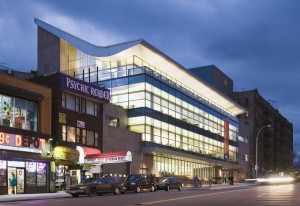
The Importance of Second Language Learning:
Why are New York Libraries Overrun?
Many people wonder whether they should try and learn a new, second language. It is not an easy, and certainly not a cheap process, as it requires enormous amounts of dedication, especially if you are not exposed to that particular language often. Making the decision can be a thing that can certainly change your life, and knowing another language can help you not only in your business life, but it can also give you an insight into another culture and their way of thinking.
There are about 6500 spoken languages today, which is more than you can possibly imagine. Language is a set of symbols used to create an infinite set of words, and sentences, which can convey every possible thought, meaning, and purpose a human brain can think of. Contrary to popular belief, the English language is not the most spoken in the world, and that place is taken by Mandarin Chinese, since it has about 1,2 million speakers.
Does this mean that you too should learn Chinese? Of course not, but knowing this language can give you an edge in the competitive business world, not to mention how good it would look in your CV. The world is a big place, and modern technologies are making the distance between us smaller and smaller every day, and because of this, we are on a definite path to becoming one big community where information is shared at staggering speeds. This brings us to a very important fact:
knowing a second or even a third language is not a privilege,
it has become an essential need.
Many immigrants struggle with learning the language of their new country, which is especially important in America, where the knowledge of the English language will give you a whole new world of possibilities. Because of this, the Bronx Library on East Kingsbridge Road has recently become one of the greatest language learning centers in New York, offering its services to everyone.
It is the largest public library in the Bronx, opened in 2006, and it served as a replacement for the Fordham Branch Library, which spread over 78,000 square feet. Even since the first time its doors opened in 1923, it has served as a place where people, mostly immigrants, could visit and learn to read and write English but also get accustomed to the American culture and literature. This library, almost 100 years later, still serves the same purpose. Still, it is also one of the most well-known sites in New York, with its distinct architectural style, famous for its energy-efficient lighting systems, and widespread use of natural lights instead of artificial ones.
Because of this, many other libraries in New York are trying to reach the same level of success and fame among those who want to improve their knowledge by trying to expand and increase the number of their language/literacy programs. A very important thing to mention here is that all these programs mentioned are free for everyone, regardless of their income and what is especially interesting, their immigration status.
This means that it does not matter whether they are already citizens of the USA. Unfortunately, due to these characteristics, these services are extremely popular, and waiting queues are now a common occurrence. Many people stand in line for hours just to try and find their spot, but many are turned away because of the lack of space.
While private schools can offer some great courses, they are only available to those willing to open their wallets to pay fees. This is another reason free public libraries are so popular, considering that at least one-third of New York’s 8 million residents come from other countries. At least one million people speak almost no English.
This library had over 7,901 places taken in 2014, which is a great achievement considering that in 2011 it only had 2,500. It is actively seeking new investors to help offer about 16,000 seats in the following years. This costs around $5 million a year, and more than 60% comes from private donations, and the government supplies the rest.
There are six levels of language proficiency available, from beginning levels to more advanced business versions. All the lessons are based on certain themes, like what you would say in a doctor’s office, school, public transport, family gathering, etc. This gives students the option to learn what they want, in a friendly and easy way, without it being a burden or too difficult.
All of this is not only a great improvement in their everyday lives, but it is also one of the most important aspects of finding proper job opportunities. One program level lasts about six months, and attendance is required, but that is usually not the problem, as everything is voluntary and everyone goes there willing to learn.
This, in itself, is a good thing, both for each individual and the greater community, and it is closely related to the long-running debate of whether all immigrants should be forced to learn English. Of course, the most common arguments for this are that all immigrants could not possibly be valuable members of the society unless they speak the language, which is flawed reasoning, as it mostly relies on the person’s desire to help and integrate into society.
On the other hand, you can imagine that forcing a different culture on immigrants can feel threatening to them, in addition to the fact that the transition alone and adjusting to the new culture is already difficult enough. Even a celebrity like Gene Simmons has something to add to this topic – he thinks that it might be difficult for some people, but that everyone should learn the language of their new homeland.
And while most people can agree that learning the foreign language of the country you want to live in is a prerequisite for a prospective future, most born Americans are not so enthusiastic about learning a new language. Only 18% of Americans speak another language and can hold a conversation in it, while this number is around 53% in Europe and climbing. Naturally, those with more advanced education are more likely to be bilingual, which even further emphasizes the importance of education in general. For this connected world to survive and for anyone to flourish, a variety of language skills is certainly a big asset.


